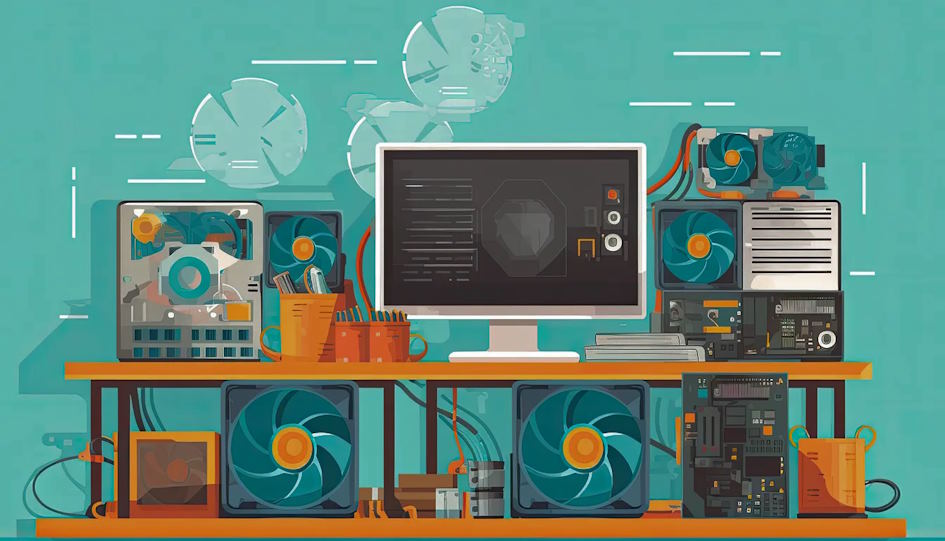Traditional mining hardware, characterized by dedicated rigs and ASIC (Application-Specific Integrated Circuit) devices, has been the conventional choice for those seeking to mine cryptocurrencies independently. However, the emergence of cloud mining has introduced a paradigm shift in the mining landscape. Cloud mining allows individuals to participate in mining activities without the need for physical hardware, leveraging the computational power of remote data centers.
The Rise of Cloud Mining
In recent years, cloud mining has emerged as a compelling alternative to the traditional hardware-centric approach. Cloud mining presents a distinct proposition, enabling individuals to rent computational power remotely from mining farms, thereby sidestepping the requirement for substantial upfront investments in hardware. This shift in the mining paradigm prompts critical questions about cost-effectiveness, security, and overall performance when compared to the well-established methods of traditional mining hardware.
Cloud mining’s appeal lies in its accessibility and convenience. By leveraging remote data centers, miners can participate in the mining process without the need to handle the intricacies of hardware setup and maintenance. This ease of entry lowers the barriers for newcomers, democratizing access to cryptocurrency mining. However, these conveniences come with their own set of challenges, including concerns about the security of remote operations, potential risks associated with third-party services, and the need to carefully evaluate the overall cost structure.

Traditional Mining Hardware: Pros and Cons
Traditional mining hardware, with its dedicated rigs and ASIC devices, has long been the backbone of cryptocurrency mining. One of the key advantages lies in the control and ownership of the hardware, providing miners with a tangible asset that can be fine-tuned for optimal performance. However, this control comes at a price—substantial upfront costs for purchasing hardware and ongoing expenses for maintenance and electricity.
The initial setup costs for traditional mining hardware can be a significant barrier for individuals looking to enter the mining space. The demand for powerful hardware capable of competing in the ever-escalating arms race of mining power often requires a substantial investment. Additionally, operational costs, including electricity and cooling, can eat into potential profits.
On the flip side, the dedicated nature of traditional mining hardware allows for a high level of customization and control. Miners can choose the specific hardware, optimize settings for maximum efficiency, and be directly involved in the day-to-day operations of their mining rigs. This level of control can be appealing to those who value hands-on involvement in their mining activities.
Cloud Mining: Pros and Cons
Cloud mining, in contrast, offers a more accessible entry point for individuals interested in cryptocurrency mining. By outsourcing the computational power to remote data centers, users can participate in mining without the need to invest heavily in hardware. This is particularly attractive to those who may lack technical expertise or want to avoid the hassle of hardware maintenance.

The upfront costs of cloud mining are generally lower compared to traditional hardware. Instead of purchasing and maintaining physical mining equipment, users pay for a subscription or contract with a cloud mining service. This model allows for greater flexibility, as users can scale their mining activities up or down based on their budget and market conditions.
However, the convenience of cloud mining comes with its own set of challenges. Users entrust their mining operations to third-party services, raising concerns about the security of their assets and the reliability of the service providers. Additionally, the overall cost structure of cloud mining, including subscription fees and potential hidden charges, requires careful consideration to ensure profitability.
Cost Analysis
To make an informed decision between cloud mining and traditional hardware, a detailed cost analysis is essential. Traditional mining hardware involves upfront costs for purchasing equipment, which can be a significant investment. These costs include not only the mining rig itself but also ancillary equipment such as power supplies and cooling solutions. In addition, ongoing operational costs, including electricity and maintenance, can impact the overall profitability of traditional mining.
Cloud mining, on the other hand, operates on a subscription or contract basis. Users pay for computational power provided by the cloud mining service, and this cost is often presented as a fixed fee over a specific time period. While the upfront costs are generally lower than traditional mining hardware, users must carefully evaluate the terms of the contract to understand the total cost of ownership. Hidden fees or unexpected charges can impact the overall profitability of cloud mining operations.
Return on investment (ROI) is a crucial metric in determining the success of a mining operation. Traditional mining hardware, despite higher upfront costs, may offer a faster ROI if the market conditions are favorable and the hardware is efficient. Cloud mining, while providing a lower barrier to entry, may have a longer time frame for ROI due to the ongoing subscription costs.
